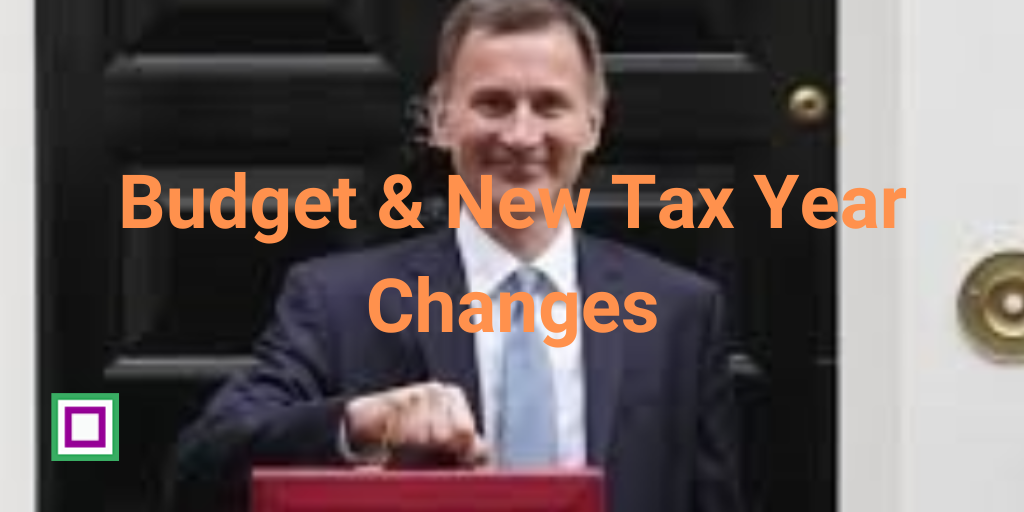
This is a very busy time of year normally with the new tax year and the budget 2023. Here’s how it will affect personal and payroll matters:
Budget 2023
1. Taxation & wages
The headline policy this budget 2023 has been the Chancellor, Jeremy Hunt’s decision to remove the cap on the amount workers can accumulate in their pension. The cap was £1.07m before extra taxes had to be paid. This will naturally only benefit higher earners who can accumulate that size of pot.
Fuel duty remains frozen -the 5p cut is to be kept for another year rather than ending in April as intended.
Taxes on tobacco and alcohol will increase. Some good news for pubs is that there will be new reliefs for wine, beer & cider will be introduced.
The new thresholds for income tax and National Insurance are set-out in the section below.
Companies with profits between £50,000 and £250,000 will pay between 19% and 25%.
The main rate of corporation tax on taxable profits over £250,000 will raise from 19% to 25%.
2. Childcare, energy & other measures
There will be 30 hours of free childcare for 1 and 2 year olds for working parents, which will be rolled out in stages from April 2024 in England.
Families on universal credit to receive childcare support up front instead of in arrears, with the £646-a-month per child cap raised to £951.
The current energy subsidy limiting typical energy bills to £2,500 per year has been extended to the end of June.
There will be £200m extra help for local councils to repair potholes. That it is all going to be swallowed up in Lincolnshire is just a rumour!
Full details of the budget 2023 can be found here: Spring Budget 2023 (HTML) – GOV.UK (www.gov.uk)
Tax year 2023 – 24
1. New tax thresholds
The Personal Allowance remains at £12,570 per annum, meaning that no tax is paid on wages up to this figure, £1,048 per month or £242 per week.
There are three tax bands for earnings above £12,570:
Basic Rate 20% on £1 – £37,700 (i.e. for total earnings £12,571 – £37,700)
Higher Rate 40% on £37,701 – £125,140 and
Additional Rate 45% on £125,141 and above.
2. New tax codes
Form P9X (2023) from HMRC gives the tax codes to use from 6th April 2023.
3. National Insurance
The Class 1 National Insurance thresholds remain the same as the second half of 2022.
The lower earnings limit (LEL) is the point at which you can claim qualifying years for the state pension but NI rate is 0%. For 2023 – 24 it is £9,100 per year. If you employ someone and pay them this amount or more you have to register for PAYE.
The Primary Threshold is where the employee starts paying NI and the Secondary Threshold is where the employer starts paying NI.
The bands are:
| Threshold | Pay per week | Pay per month | Pay per annum | Rate (category letter A) |
| Lower earnings limit (LEL) | £123 | £533 | £6,396 | 0% |
| Primary Threshold (PT) | £242 | £1,048 | £12,570 | 12% |
| Secondary Threshold (ST) | £175 | £758 | £9,100 | 12% |
| Upper Secondary Threshold (under 21) (UST) | £967 | £4,189 | £50,270 | 2% |
| Apprentice UST (AUST) | £967 | £4,189 | £50,270 | 2% |
| Upper Earnings Limit (UEL) | £967 | £4,189 | £50,270 | 2% |
Employers National Insurance (for category letter A) is 0.00% for earnings at or above LEL up and including ST.
For earnings above ST up to and including UEL/ UST/ AUST, it is 13.80%
The Employers National Insurance Allowance remains at £4,000 per year. You are only eligible if your total Class 1 NICs liability is below £100,000 in the tax year before the year of claim. It will also start to operate as de minimis state aid.
4. National Minimum Wage
The national minimum wage goes up on 1st April:
| Year | 23 and over | 21 to 22 | 18 to 20 | Under 18 | Apprentice |
| April 2022 (current rate) | £9.50 | £9.18 | £6.83 | £4.81 | £4.81 |
| April 2023 | £10.42 | £10.18 | £7.49 | £5.28 | £5.28 |
| Increase | 9.68% | 10.9% | 9.66% | 9.77% | 9.77% |
Almost all workers are entitled to it by law. HMRC detail the exceptions.
Full details can be found here: Rates and thresholds for employers 2023 to 2024 – GOV.UK (www.gov.uk)
5. The Workplace Pension
The contribution rates for both employers and employees remain the same. There are currently no plans for future increases.
Auto-enrolment occurs when a worker is between 22 and State Pension age and earns at least £10,00 per year.
The employer’s contribution is 3.0% and
The employee’s contribution is 5.0%.
This gives a minimum total of 8.0%. However, should the employer pay more, say 4.0% then the employee, should they wish, could pay less, say 4.0% and still maintain the 8.0% minimum. Both employer and employee can pay more than the minimum.
6. Statutory Sick Pay (SSP)
This increases to £109.40 per week. The first 3 days of any sick leave remain as ‘qualifying days’.
7. Extra Bank Holiday
To celebrate the coronation of His Majesty King Charles III, the 8th May has been declared as an extra bank holiday for this year, making a total of nine.
Hopefully this has been of use as a quick review of the headlines of budget 2023 and a checklist of things to do. It is not comprehensive and you should check on maternity & paternity pay, student loans, etc. as appropriate.



